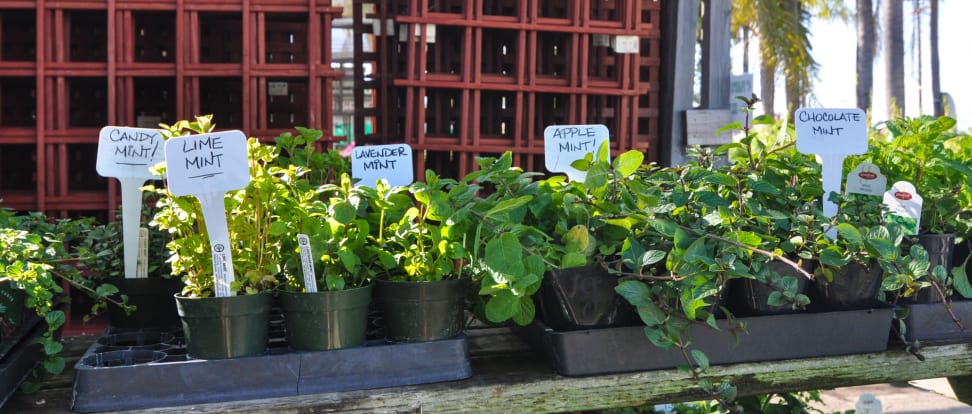Herb Gardens: The Gifts That Keep on Giving
Mother Nature can make the perfect Mother's Day gift.
 Credit:
Credit:
Products are chosen independently by our editors. Purchases made through our links may earn us a commission.
If the mom in your life loves to cook, there are 1,001 kitchen gadgets you might be tempted to get her, all invented to make cooking “easier.” From onion cutting goggles to avocado slicers, oil misters to strawberry stem removers, there’s a gizmo for every conceivable need.
But it doesn’t take long for a kitchen full of semi-clever trinkets to become a needlessly cluttered space. And at a certain point, don’t these gadgets divorce us from the delightful hands-on experience of actually crafting a meal?
So this year, why not make it a gadget-free Mother’s Day? Here's a simpler, tastier idea for making her cooking and shopping easier: Let's build her an herb garden.
What to Plant
There are about 13 herbs we’d put at the top of the list for an indoor garden. But even this short list has intriguing variations. Mint comes in more than a dozen species, and there are lots of hybrids that yield surprising flavor twists. Greek sage is delicious with poultry and squash, but most sage species aren’t good for cooking—one even delivers hallucinogenic effects.
In selecting herbs, consider how they'll be used. For instance, we can never have enough fresh basil, while bay leaf is used so rarely that it's not worth growing at home. Most herbs are ideal for shared planters, though we'd recommend a separate planter for mint—it has a habit of spreading far and wide.
Fast-growing dill and coriander are ideal to start from seed, but most other herbs are better bought as small plants—the convenience factor easily outweighs the slight price difference. Regardless of whether you're starting from seed or plants, you’ll want to use a potting mix spotted with perlite or vermiculite to help with draining. Garden soil is usually too dense, and can easily become waterlogged.
How & Where to Plant It
Remember, good lighting is essential. In most cases, a windowsill is the most obvious spot for an indoor garden. But while a kitchen window is most convenient for the cook, other rooms may provide more ample natural light. A south-facing window often works best, as sunlight lasts through most of the day. Herbs don’t like too much heat, so be careful with a west-facing window, which may provide too much hot afternoon sun.
Fresh air flow also helps. So does rotating containers, so that light sufficiently covers all sides to encourage even growth. Avoid locating containers next to a window that's prone to frost in winter months.
The best containers for growing are individual pots with saucers. These have the advantage of being portable—they can be rotated easily, or taken outside for re-potting if needed. Though it shows mostly outdoor planters, we found some good inspiration in this helpful article.
And if your mom's home is simply starved for sunlight, consider a hydroponic growing system. Kits come with their own lighting systems that can work in virtually any space.
Growing and Harvesting Tips
Mom's going to have to handle this part on her own, but you can still give her some helpful tips.
Most importantly, she should be careful not to over-water. Herbs in a planter need to be watered a few times a week at the start, but once they're established, most plants require a lot less irrigation. Basil, mint and parsley are the exceptions—don’t let their soil dry out. And regardless of what herbs you're growing, make sure the container isn’t sitting in a pool of stagnant water. That's a recipe for root rot.
She should wait till plants reach about six inches in height before starting to harvest, and avoid taking more than a third of the leaves at a time. Wait for that third to grow back before the next harvest. And keep on cooking. Fresh herbs are a renewable resource, and snipping off leaves regularly—from the top, not the sides—helps keeps the plant producing.
Some herbs, such as oregano, actually taste better after being dried. To air-dry herbs, harvest the leaves just when the first buds begin to open. This is when the natural oils will be at their peak concentration, producing maximum flavor. Hang the cuttings upside-down in a well-ventilated location out of direct sunlight.
Now... what’s for dinner?
